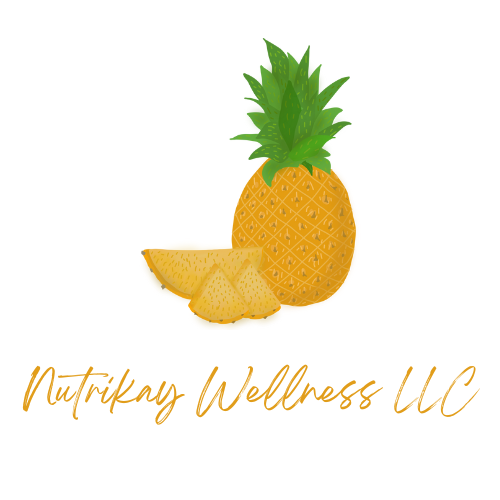Understanding Food Labels: A Dietitian’s Guide to Making Smarter Choices
Nutrition labels can be one of your best tools for making smarter food choices, but they can be confusing to navigate. With so many marketing claims on food packaging (like “low fat,” “high protein,” or “made with whole grains”), it’s easy to feel overwhelmed or misled. Once you understand how to read a label, you’ll be able to compare products confidently and build meals that truly support your health goals. This article breaks down how to read nutrition labels like a pro, so you can shop smarter and eat with confidence.
Why Nutrition Labels Matter
Nutrition labels help you make informed choices about what you eat and drink. They show how much energy (calories), macronutrients (carbohydrates, protein, fats), and micronutrients (vitamins and minerals) are in one serving of a food.
Reading labels can help you:
Balance your meals throughout the day
Identify foods high in nutrients you want more of (like fiber and protein)
Limit nutrients you may want to reduce (like added sugars and sodium)
Compare brands to find the best option for your needs
Step-by-Step: How to Read a Nutrition Label
Here is how to understand each section of the label so you can shop with confidence!
1. Start with the Serving Size
The serving size is the foundation of the label - every number below it is based on that specific amount.
For example, if the label lists 1 cup as the serving size but you eat 2 cups, you’re consuming twice the calories, fat, and sodium listed.
Tip: Always check serving size first - especially for snacks, cereals, or packaged foods that might look like one serving but aren’t.
2. Check the Calories
Calories measure how much energy a food provides. Instead of focusing only on the number of calories, think about what those calories give you.
For example, 200 calories of Greek yogurt (rich in protein and calcium) is not the same as 200 calories of soda (mostly sugar)
3. Look at the Nutrients to Limit
Some nutrients are better consumed in moderation. The USDA recommendations include:
Saturated fat: Aim for less than 10% of daily calories.
Trans fat: Avoid as much as possible.
Sodium: Keep under 2,300 mg per day.
Added sugars: Ideally, less than 10% of total calories.
Too much of these nutrients over time can increase risk for heart disease, high blood pressure, and other chronic conditions.
Tip: If one frozen meal contains 900 mg of sodium, that’s almost 40% of your daily limit. No stress, it’s just a good reminder to balance it with lower-sodium meals later in the day.
4. Focus on the Nutrients to Get More Of
These are the nutrients that many people don’t get enough of:
Fiber – supports digestion and fullness
Protein – supports muscle and metabolism
Vitamins & minerals – especially calcium, iron, potassium, and vitamin D
When comparing products, look for higher amounts of these beneficial nutrients. For example, cereal with 5 grams of fiber per serving is a better choice than one with 1 gram.
5. Understand % Daily Value (%DV)
The % Daily Value shows how much a nutrient contributes to your daily diet, based on a 2,000-calorie day.
5% DV or less = low
20% DV or more = high
This is shown on the nutrition label, on the far right side. This makes it easy to see at a glance if a food is a good or poor source of certain nutrients.
In general, aim high in %DV for fiber, vitamins, and minerals and lower for sodium, saturated fat, and added sugars.
Label Reading in Action: A Quick Example
Comparison of two granola bars:
Nutrient Bar A Bar B
Calories 180 220
Added Sugars 12 g 7 g
Fiber 2 g 5 g
Protein 3 g 7 g
At first glance, Bar A has fewer calories, but Bar B provides more fiber and protein with less sugar, making it a more balanced choice. This is a great example of why calories alone don’t tell the full story.
Common Nutrition Label Myths
Reading nutrition labels can be tricky, but learning how to interpret them will help you shop smarter and eat better. Here are some common myths I have heard, and the truth behind them.
“Organic means healthy.”
Not always! Organic foods can still be high in sugar, salt, or fat. Always check the label.
“No added sugar means sugar-free.”
“No added sugar” means no sugars were added during processing, but natural sugars (like those in fruit or milk) may still be present.
“If it’s low fat, it’s better for you.”
Many low-fat foods add sugar to improve taste. Instead, focus on whole foods and balanced nutrients.
“I don’t need to read labels if I eat clean.”
Even “healthy” products can vary widely in sodium, added sugars, and portion sizes — reading labels helps keep you informed.
Takeaways
Learning how to read a nutrition label empowers you to make choices that align with your goals - whether that’s supporting heart health, managing energy, or improving overall nutrition. Once you understand these helpful tips, you’ll feel more confident reading labels with ease!
Here’s a quick recap:
Start with serving size and calories
Limit saturated fat, sodium, and added sugars
Focus on fiber, protein, and vitamins/minerals
Use %DV to compare products quickly
Remember: there’s no need for perfection. The goal is awareness - knowing what’s in your food so you can build balanced, sustainable habits that work for you.
If you’re looking for personalized guidance, nutrition counseling can help you make label reading second nature and tailor it to your unique health goals. Reach out with any questions!
